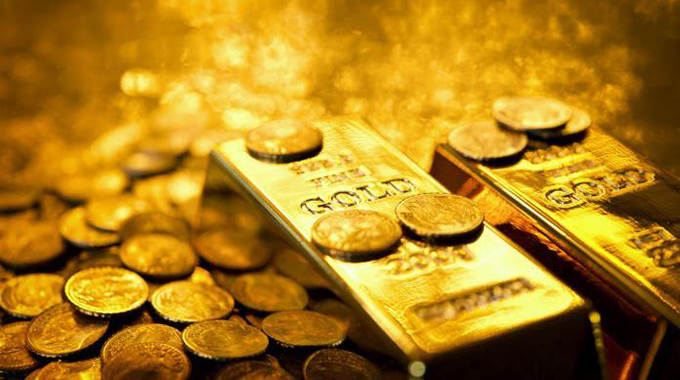EDITORIAL COMMENT: Mosi-oa-Tunya coin can help defeat black market

The decision that the new Zimbabwean gold coin, the Mosi-oa-Tunya, will be sold in Zimbabwean dollars as well as foreign currency from July 25 will help defeat the black market by offering something better and, critically, legal for those who wish to store value in a safe rather than bundles of US$100 notes bought from dubious traders.
The Reserve Bank of Zimbabwe has now announced that the coin, containing 1 troy ounce of gold, close on 31,1g, will be sold through the banks for local currency.
They will also be a liquid asset, in that the Reserve Bank will buy them back. Presumably the repurchase will involve some quick check to ensure that forgeries or stolen coins are not sold back, but those checks can be quick and simple since each coin is numbered.
The coins can also be used as collateral and for all practical purposes fungible, meaning they can be sold in other markets, if necessary as gold rather than coins.
There is a margin when buying, since the Reserve Bank is charging a price based on the global gold price on the day plus the cost of minting the coins and presumably buys back for the price of the gold.
But the margin will be far less than the almost 40 percent that the black market shoves in between what it pays for US dollars and what it charges for those same dollars.
So immediately there will be a major advantage for those wanting to store value in an easily tradable asset in that they do not have to rely on high levels of inflation for some time to just break even.
That huge margin in the black market is, incidentally, an additional driver of inflation when those dipping into the market are doing so to obtain foreign currency for trade purposes rather than to pile up currency in a safe.
They need to add that 40 percent to the selling price just to raise the replacement cash to pay the gouging dealer.
The second major advantage is that gold is more likely than the US dollar to preserve value. At the moment the US is seeing inflation, in its own currency, running at around 10 percent a year and with the huge growth of money supply in the US economy, plus the other pressures, no one is expecting it to fall very fast very soon; indeed, some economists reckon it will rise.
So even those who like the idea of piles of US dollars in a safe or trunk are likely to think seriously about gold instead, rather than let their piles gradually devalue.
Banks will offer custodial services, and give out custodial certificates, but even those taking them home might still face robbery, although they are easier to hide, but not other dangers such as rotting paper money hidden in a damp place.
The coins are part of the deliberate attempt by the Reserve Bank and the Government to hammer the black market and the dreadful damage done by speculators using it by using market forces, rather than trying to rely on criminal law.
The basic thrust of this approach was to first set a proper exchange rate based on willing buyer and willing seller through the banking system, rather than setting a figure by fiat, or adjusting markets to ensure that the set figure came out.
The interbank market is small, but then so is the black market, but its rate is a real rate set by market forces.
The second thrust was to stop the banking system and speculators creating money supply through huge loans for speculation.
Banks have been made to tighten up their loan policies, lending reasonably freely for production but not for speculation. And presumably those who want to borrow money to buy gold coins will find that difficult under the new rules.
In fact the Reserve Bank has made it clear that the banks selling the coins, as well as its own gold dealing subsidiaries, will have to apply the rules of know your customer.
That should also help stop thieves and robbers taking their local currency into a bank to get something they can carry outside the country in their pocket.
In the third thrust interest rates were shoved right up to 200 percent, although serious proper business can get half that in medium term loans.
That should dry up some of the demand side for the black market, by making it expensive to borrow and then buy foreign currency on that market.
Tightening up accounting in the Zimbabwe Stock Exchange will also dampen speculative dealing without troubling investors in the slightest.
The fourth thrust concentrated on the supply of foreign currency to business. This was to increase the percentage of export earnings that will now appear in the auction and interbank markets, which are now aligned on rates, with interbank for small foreign payments and the auctions for the bulk cash the major importers need.
This has been done by directing that net-exporters now have to sell a quarter of what they retain, but do not spend after 120 days.
While Zimbabwe has a positive current account, that is more foreign currency coming in than we spend, a significant chunk of export earnings have been stashed away in nostro accounts, creating large, but unused reserves for some net-exporters but cramping the auctions and interbank market that importers need.
That move should reduce pressure on the black market from the demand side, as legitimate formal business has more access to the foreign currency we earn.
Now the Mosi-oa-Tunya is another market-related attack on the black market, by offering something better for those who want to retain value.
Because of the huge black-market margins gold will be effectively cheaper as well as better for those who want to preserve value. As that moves forward it should once again dry up significant demand in the black market.
The net result of reducing demand for black-market foreign currency and reducing the flow of Zimbabwe dollars into the black market will diminish that market from both ends, without any handcuffs needed, and as rates fall as a result the interbank market should start seeing a lot more of the diaspora remittances, the main source of black market foreign cash, going through banks.
While people love to quote the black market selling rate, they forget those huge margins when the dealers buy diaspora remittances, or cash from hoarders and speculators selling out.
And that price is the one watched by those selling the foreign currency in the first place.
Already the black market rate for those selling US dollars for Zimbabwean banknotes is round about the interbank rate and the double squeeze by the authorities should see more alignment.
Street dealers will then revert to what they once were, and what we see in other countries, a small group offering the convenience of money changing at 8pm or far from the nearest bank, rather than some sort of group that pretends to run the economy.










Comments